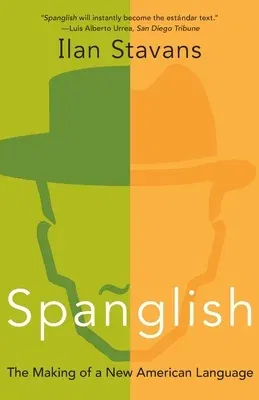Ilan Stavans
(Author)Spanglish: The Making of a New American LanguagePaperback, 3 August 2004

Qty
1
Turbo
Ships in 2 - 3 days
In Stock
Free Delivery
Cash on Delivery
15 Days
Free Returns
Secure Checkout

Print Length
274 pages
Language
English
Publisher
Harper Perennial
Date Published
3 Aug 2004
ISBN-10
0060087765
ISBN-13
9780060087760
Description
Product Details
Author:
Book Format:
Paperback
Country of Origin:
US
Date Published:
3 August 2004
Dimensions:
20.32 x
13.51 x
1.68 cm
ISBN-10:
0060087765
ISBN-13:
9780060087760
Language:
English
Location:
New York, NY
Pages:
274
Publisher:
Weight:
231.33 gm